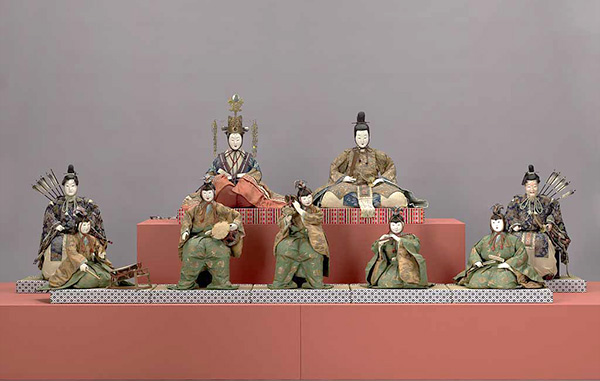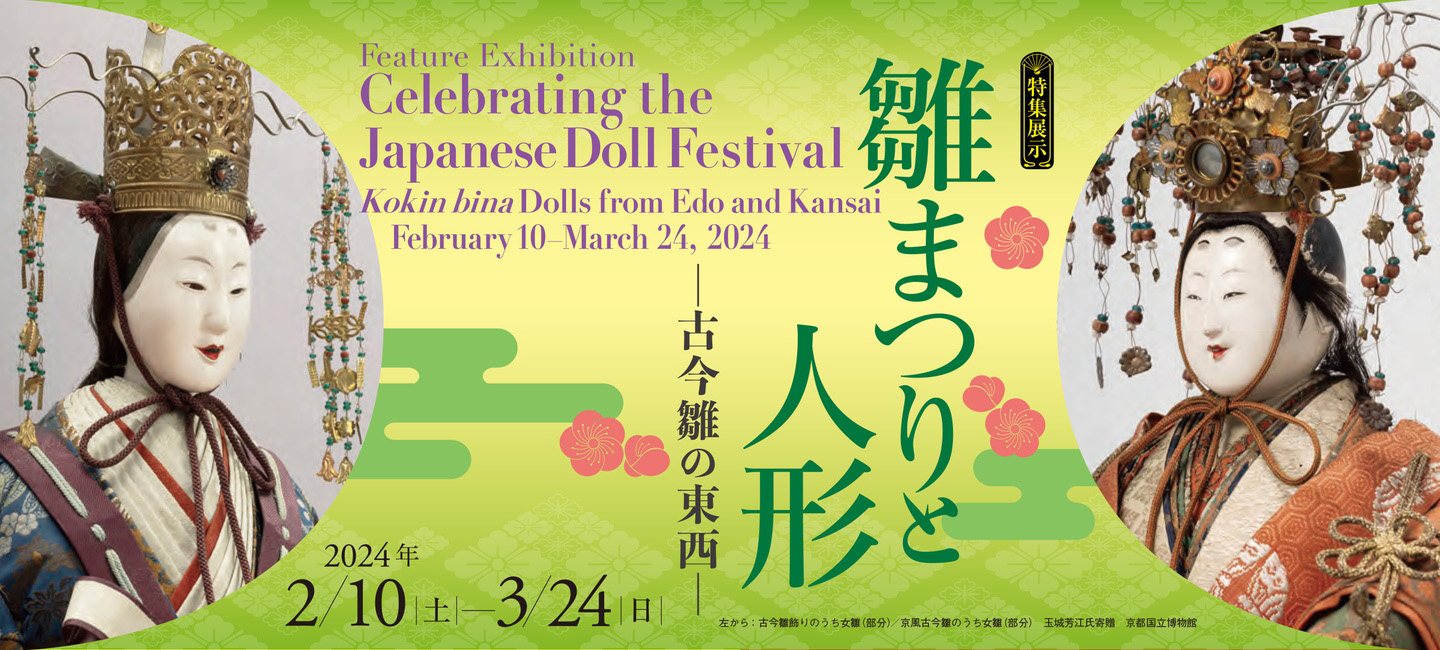- TOP
- Exhibitions
- Feature Exhibitions
- Feature Exhibition Celebrating the Japanese Doll Festival: Kokin bina Dolls from Edo and Kansai
General Information
- Exhibition Title
-
Feature Exhibition
Celebrating the Japanese Doll Festival: Kokin bina Dolls from Edo and Kansai
- Period
-
February 10–March 24, 2024
- Venue
-
Heisei Chishinkan Wing, Gallery 1F-2
- Closed
-
Mondays
*The museum will be open on Monday, February 12, and closed on Tuesday, February 13, 2024.
- Museum Hours
-
9:30 a.m.–5:00 p.m. (Entrance Until 4:30 p.m.)
Open until 7:00 p.m. on Fridays (Entrance Until 6:30 p.m.)
Extended Evening Hours: Fridays, January 2 to March 24, 2024
- Admission
-
Adult 700 yen University Student
(ID required)350 yen - Admission fee includes admission to all galleries in the Heisei Chishinkan Wing.
- Admission is free for high school students and other youths age 0 – 17, seniors over 70, visitors with disabilities and one caretaker, and for Campus Members (including faculty). Please show ID.
- Admission for school groups: Admission to the Collection Galleries is free for elementary school, middle school, and high school students on school fieldtrips as well as teachers serving as their guides.
Description of Exhibition
The Japanese custom of displaying hina dolls on the third day of the third month began in the Edo period (1615–1868). The Doll Festival (Hina Matsuri) is known as a day to pray for the health and happiness of girls, but it originated as a ritual of purification, when the accumulated defilements from the daily lives of actual children would be transferred onto surrogate figurines. These were eventually linked with child’s play and evolved into the elaborate hina doll sets displayed in the home.
This year, Kyoto National Museum’s annual exhibition of Japanese dolls includes a variety of Kokin bina, the precursors of today’s hina dolls, as well as the lavish palace structures on which they were often displayed in the Kansai region. Among the featured works is a complete set of Kokin bina dolls considered a masterpiece of the renowned Edo (Tokyo) doll maker Hara Shūgetsu II (d. 1844). We hope you enjoy the differing aesthetic tastes of the Kantō and Kansai regions through viewing dolls from both Edo and Kyoto.

Kokin bina Dolls
By Hara Shūgetsu II







